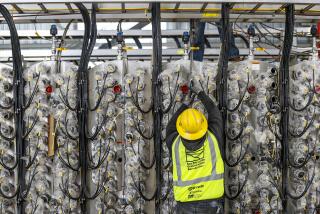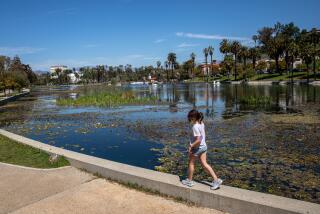Talks to Decide Who Will Guide Cleanup of Toxic Site
Two state agencies began discussions Tuesday to decide which one will oversee the cleanup of a highly contaminated area in the Irvine Business Center, once the site of a plant that formulated pesticides using cancer-causing chemicals.
The owners of the land, Indiana-based Great Lakes Chemicals Corp., which operated on the land from 1973 to 1983, have agreed to pay for the cleanup of the contaminated soil and water in the area.
âThe chances of this site being restored to pristine conditions are remote,â said Kurt Berchtold, assistant executive officer of the Santa Ana Regional Water Quality Control Board, which met in Long Beach with the Department of Toxic Substances control. âThis is something that will be ongoing for many, many years since there is such a large mass of contaminants on the site.â
The main contaminant, ethylene dibromide (EDB), is highly volatile and unstable, but there are no immediate health risks, he said.
A plume of contaminated ground water near the Great Lakes property, on Derian Avenue, threatens drinking water in the future, said Berchtold.
The contamination remains in shallow ground water, not the deeper water used for drinking, said William Mills, general manager at the Orange County Water District, which provides water to 2 million Orange County residents.
Even so, Mills added, the potential exists for chemicals to move into deeper ground water, boosting the cost of cleanup and in time tainting some wells. He supports swift cleanup at the site.
The board decided during its April 17 meeting to require the company to clean the area.
âOur position is that weâre ready to move forward with a remediation plan once itâs determined which agency will preside over that activity,â said Great Lakes spokesman Greg Griffith. No price for the cleanup has been determined.
Two other companies owned the land following the closure of the plant, including a developer that built a 105,000-square-foot office building and Great Western Financial Corp. which sued the chemical company after discovering the contamination. As part of the 1995 settlement, Great Lakes agreed to take over the contaminated site.
More to Read
Sign up for Essential California
The most important California stories and recommendations in your inbox every morning.
You may occasionally receive promotional content from the Los Angeles Times.










